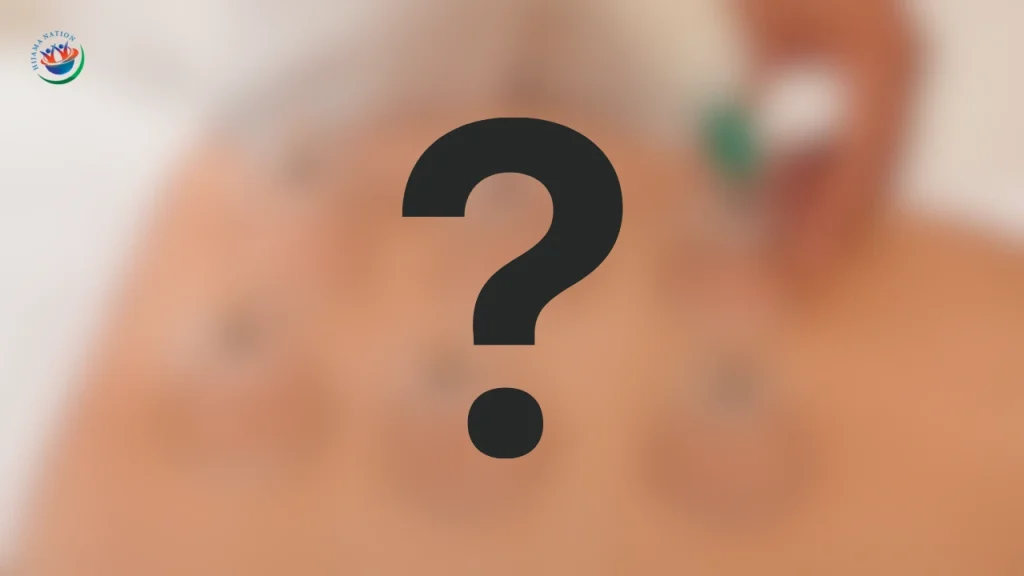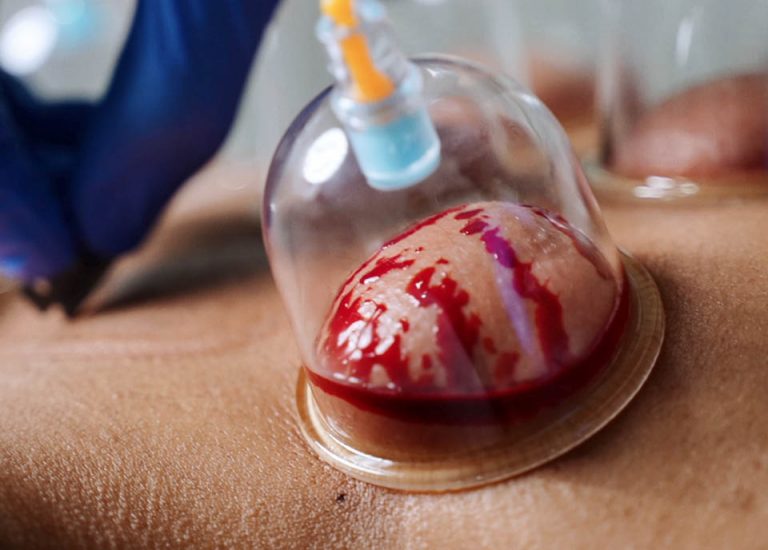It seems like the whole world is buzzing about Hijama Cupping Therapy, and it’s no surprise! When the most decorated Olympian of all time, Michael Phelps,

and other U.S. athletes like Alexander Naddour show up with those distinctive round, purple marks on their bodies, people take notice. So, what’s this treatment they’re all using? It’s called Cupping.

Athletes and Hijama Cupping Therapy: The Trendsetters
Cupping therapy isn’t just a celebrity fad—it’s making waves in the athletic world. Naddour mentioned that cupping “provides relief from the soreness and pounding that come from gymnastics.” It’s not only gymnasts and swimmers who swear by it—world-famous athletes like Floyd Mayweather, Amir Khan, Manny Pacquiao, and Shahid Afridi have all tried cupping.

But athletes aren’t the only ones. Actors and singers like Gwyneth Paltrow, Justin Bieber, Victoria Beckham, Freida Pinto, and Jennifer Aniston have also been spotted with those cupping marks, bringing even more attention to this ancient practice.
What Exactly Is Hijama Cupping Therapy?

Cupping is a natural, holistic therapy that promotes blood circulation, oxygenation, and relaxation. It’s often mistaken as a purely Chinese therapy, but in fact, it has roots in various cultures—Greek, Arabic, Egyptian, European, Native American, and Asian—going back centuries.
There are two main types of cupping: Dry Cupping and Wet Cupping.
- Dry Cupping can be further divided into:
- Fixed Cupping: Where the cups remain stationary on the skin.
- Moving Cupping (or Massage Cupping): Here, oil is applied to the skin, and the cup is moved around like a deep tissue massage. This type is gaining popularity right now.

One common method is Fire Cupping, where fire removes oxygen from the cup, creating a vacuum before placing the cup on the skin. You can also use cups made of glass, plastic, silicone, or bamboo. However, modern cupping often uses disposable plastic cups with a manual pump to create the vacuum.

Cups are placed on specific pressure points or meridians, where they create suction, drawing tissue into the cup. This process promotes blood circulation, releases stagnant energy (known as “Qi” in Chinese medicine), and re-energizes the body. The temporary marks or “bruising” left on the skin aren’t painful—they’re just a natural part of the process and usually fade within a few days.
For Olympians and athletes, cupping is primarily used for pain relief and muscle relaxation.
Wet Hijama Cupping Therapy: The Hijama Connection

Wet Cupping takes things a step further. After dry cupping, small incisions are made in the cupped area, allowing stagnant blood and toxins to be drawn out. In the Islamic tradition, this is known as Hijama Cupping Therapy. The word “Hijama” means “sucking” in Arabic, and it’s a practice deeply rooted in Islam, recommended by the Prophet Muhammad (Peace be upon Him).
The Prophet described Hijama as one of the best treatments: “The best medicine with which you treat yourselves is Hijama” (Al Bukhari, 5371).
Is Cupping Really Effective?
Opinions vary on cupping’s effectiveness. Some dismiss it as superstition, while others view it as a placebo effect, where the belief in the treatment makes patients feel better. Critics like Professor Edzard Ernst from the University of Exeter argue there’s no concrete clinical evidence to back cupping claims. Pharmacologist David Colquhoun from University College London has even called cupping “hocus pocus,” suggesting it doesn’t affect muscles significantly.
However, millions of people have practiced cupping for centuries, and modern research on its benefits is growing. As more studies are conducted and professional standards for cupping improve, the therapy is gaining credibility as a natural healing method.
Why Muslims Trust Hijama
While cupping may still face skepticism, Muslims have practiced Hijama Cupping Therapy for centuries, confident in its benefits due to its religious significance. As part of a holistic lifestyle, alongside fasting and exercise, Hijama focuses on detoxifying and cleansing the body.
Just because some medical professionals haven’t yet explored the research doesn’t mean cupping—whether dry or wet—isn’t a viable treatment. Modern medicine owes a lot to ancient practices like Hijama, and its benefits are being rediscovered today.
The Final Verdict?
It looks like Michael Phelps and other athletes are onto something with their cupping treatments! But they could take it a step further by trying the traditional Islamic method—Hijama. With its deep-rooted history and growing popularity, Hijama is more than just a trend; it’s a practice that combines mind, body, and faith.
If you’d like to learn more about Hijama Cupping Therapy, download our FREE eBook at: www.HijamaTraining.com. For more information on finding a safe, professional Hijama practitioner or what to expect from a session, feel free to email us at info@hijamanation.com.
